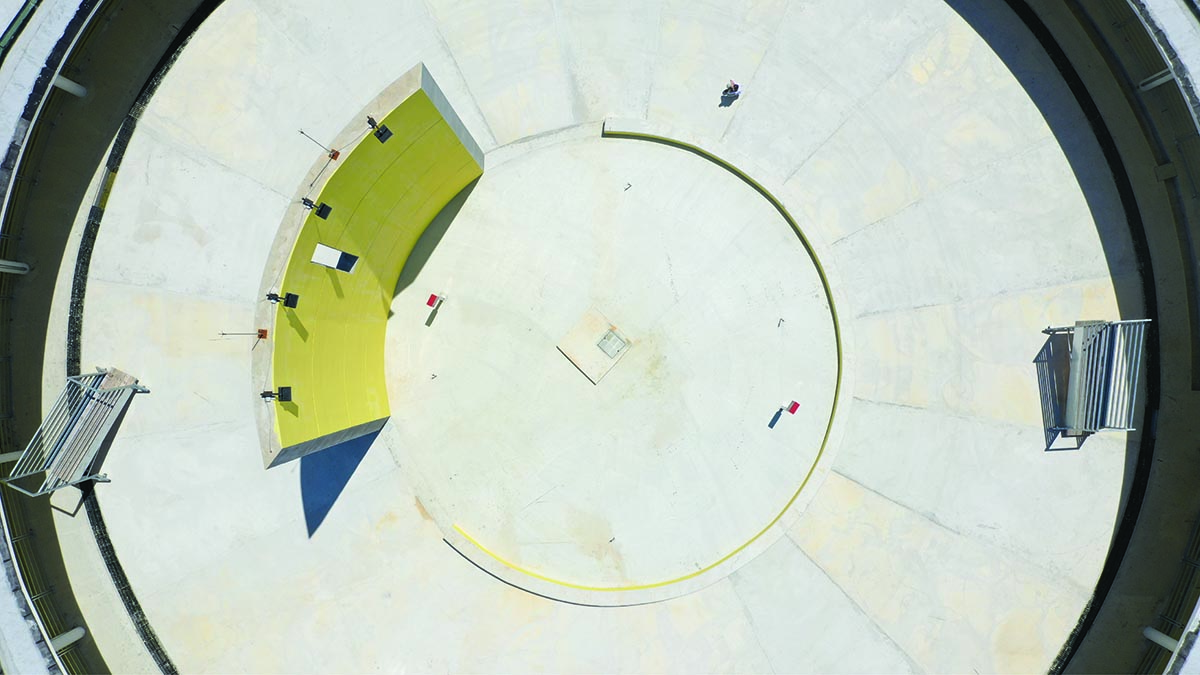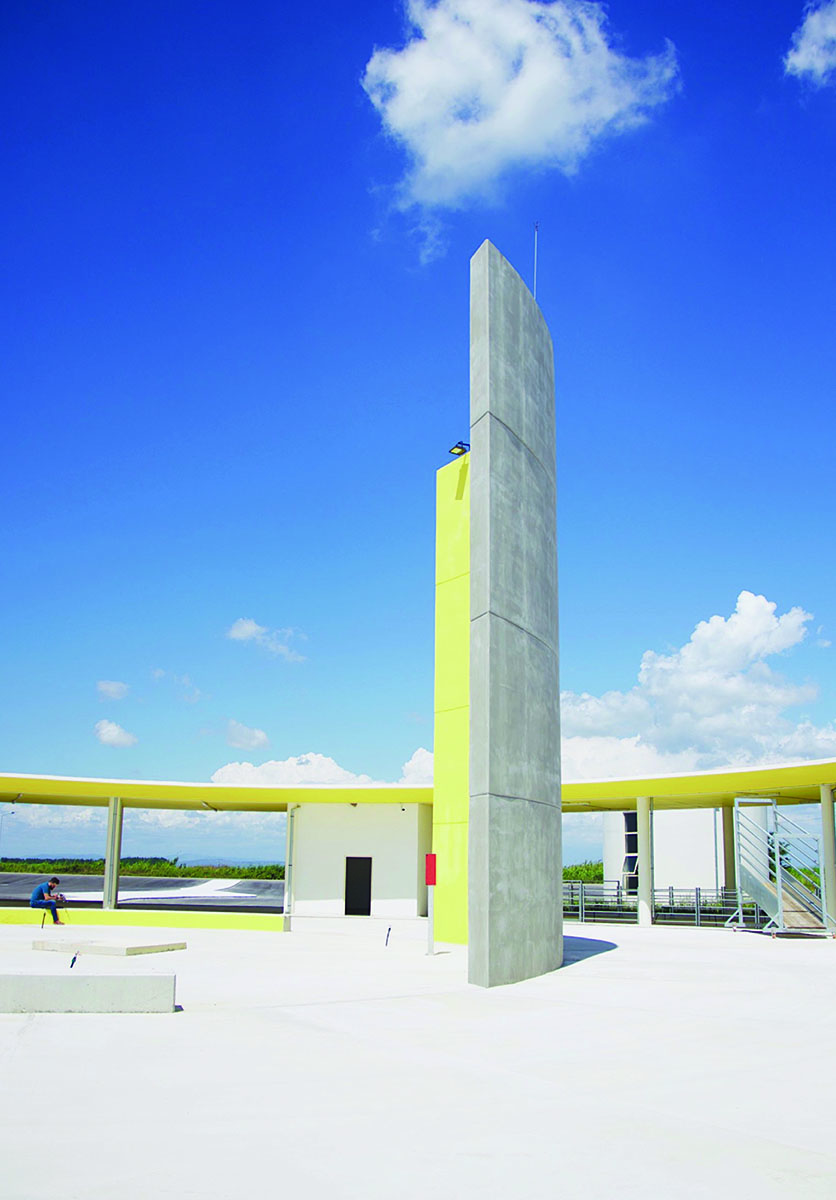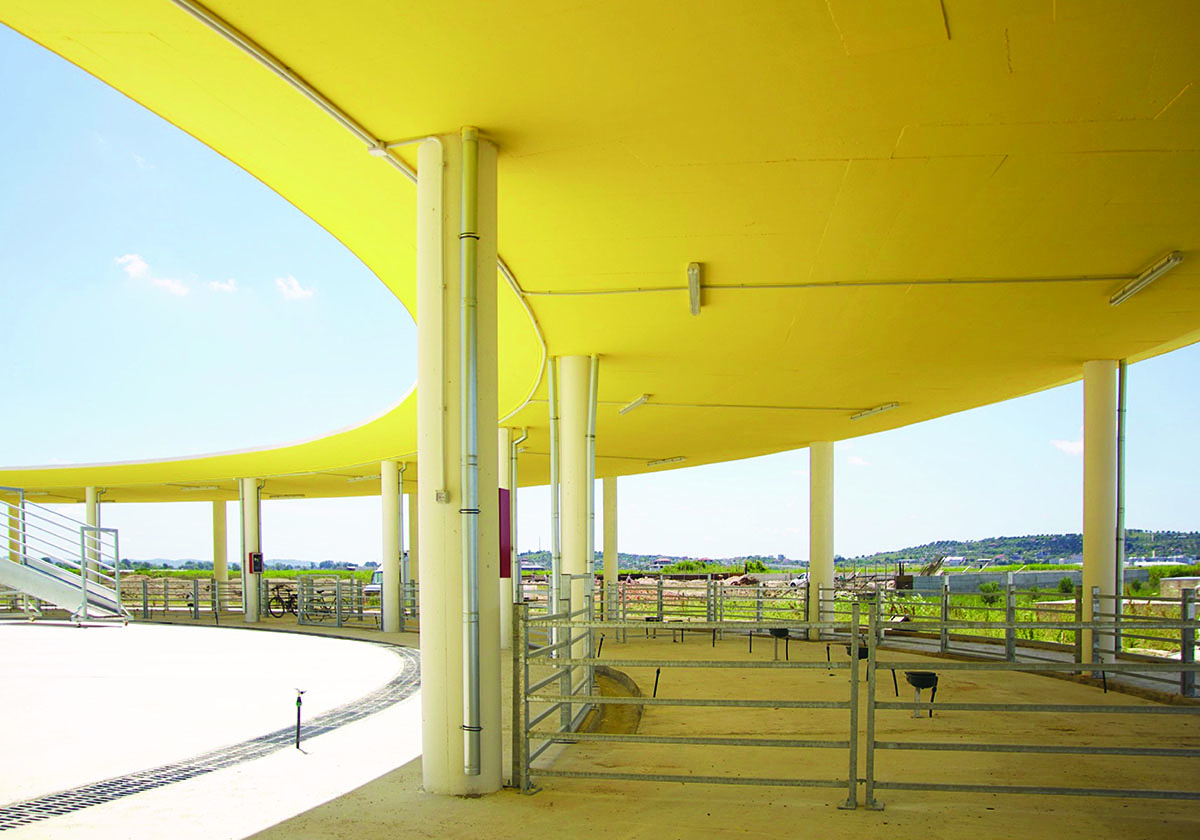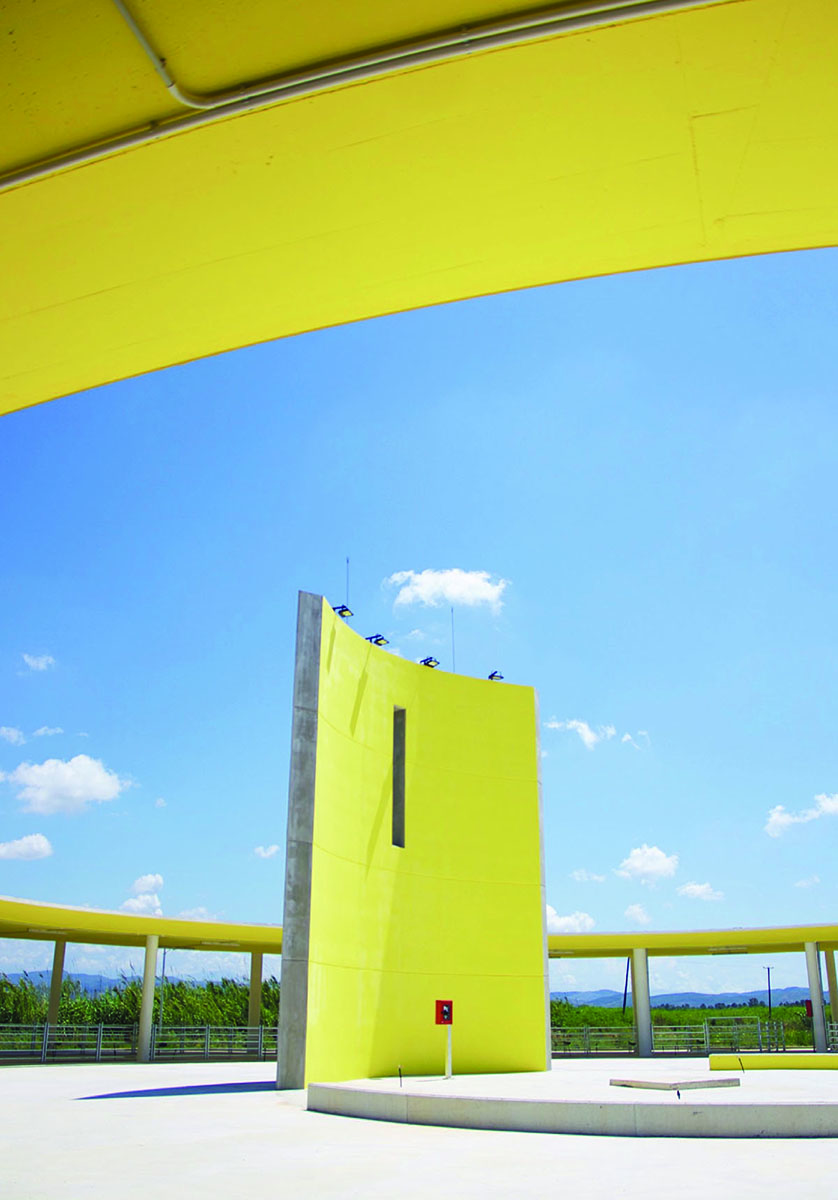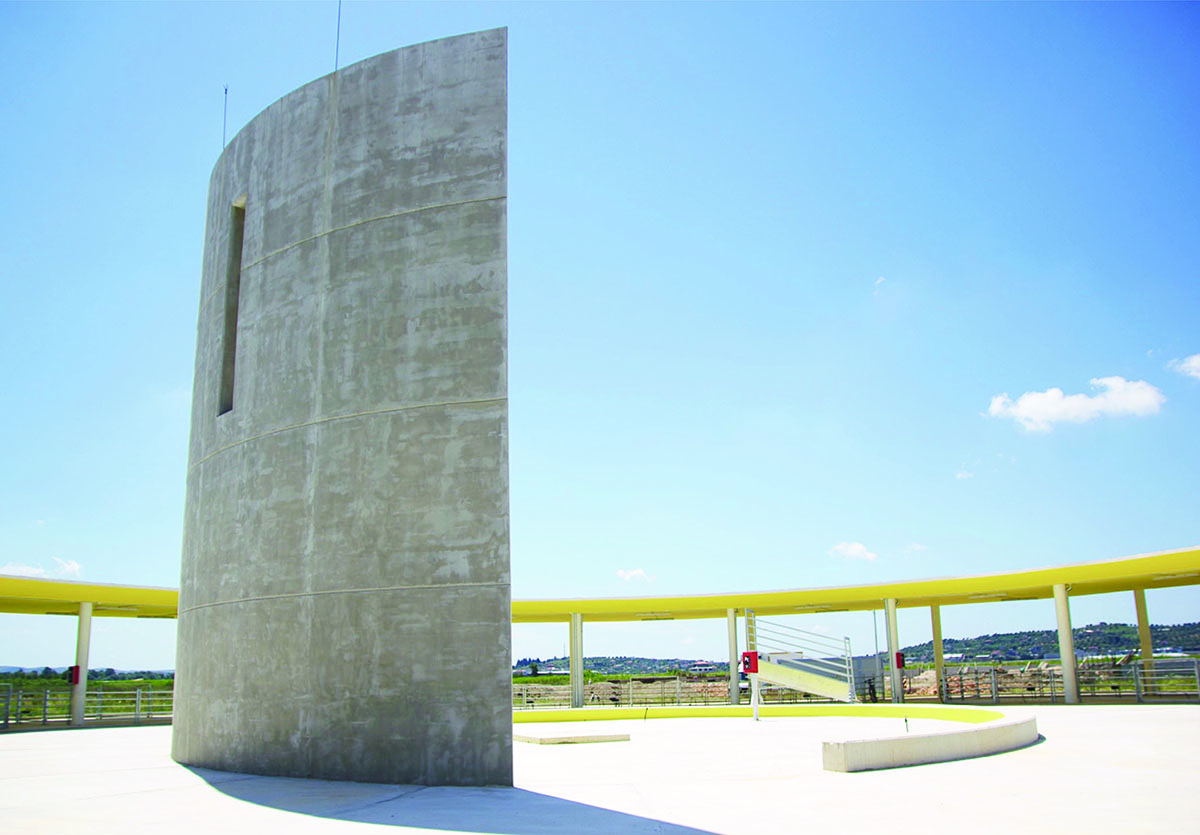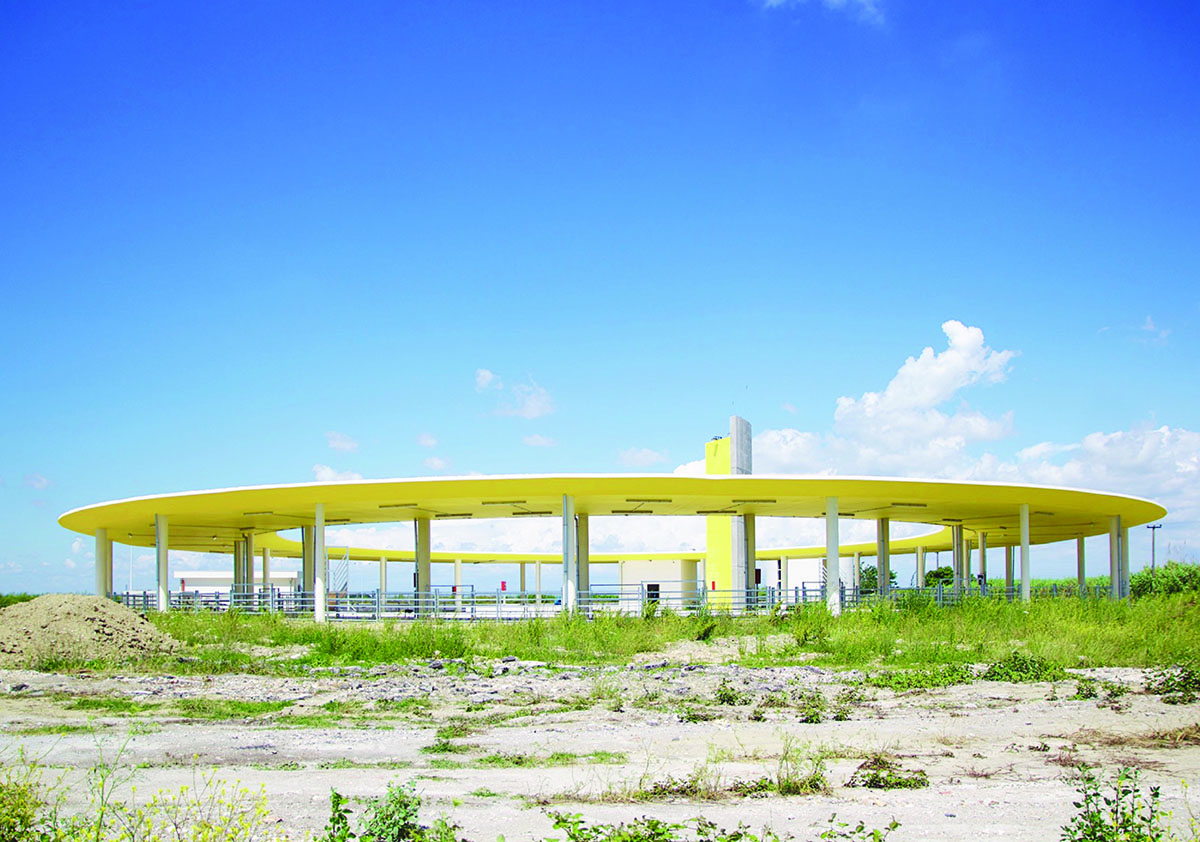Livestock Market Fier
The building is located in southern Albania in proximity to the modern city of Fier and the ruins of the Ancient Apollonia. The region has a typical Mediterranean climate, the Adriatic Sea is less than 20 km away and warm and sunny days are quite the norm. Since the first sketches in 2018, the livestock market was designed as a versatile space, whose function can easily transform into an agricultural market, an area for large rural fairs or even cultural events. A possible change becomes even more plausible in times like these, since having the word pervaded by the life threating pandemics Covid-19, originated from this very same building typology, has made us more aware than ever on the instability of our social models and the fragility of man.
The cyclic nature of the market, merges with the narratives of two life cycles of animal and man. Embodied in the circular portico, and in its panopticon-like character is the life cycle of the animal traded in this space under strict human control. Then comes man, the stakeholder for whom being here is just a minor event in the apparent complexity of his life long existence. Here he exercises his power over another living creature, seen as a mere good to be consumed. Our short fragment of time lived in this space is embodied in the high concrete wall.
At first sight the entire ensemble appears as an anthropocentric sign celebrating man’s omnipotence but it actually embodies an opposite symbolic meaning. Hence the wall, our fragment of time, isn’t at the center, it revolves around an empty circular void as the circular portico itself does.
The market is a sundial designed to make us aware of time. The everchanging shadow cast in the central square becomes a tangible reminder of the passage of time. The circle and the vertical wall are signs bearing a metaphysical dimension transcending the physical locus and projecting the viewer, ideally, into the infinity of a time beyond time.
The structure is quite simple composed by a blade shaped covering which is supported by a series of cylindrical columns. Both elements are made of reinforced concrete. The Concrete was purposely left exposed to avoid any misleading interposition in between the simplicity of the larger scale and the smaller detailing scale. The only exception is the yellow painted ceiling of the portico, added to emphasize its relationship with the sunlight, its floating-like character and to better channel its hidden semiotics.
Awards: BIG SEE Architecture Award 2020 – Winner, Public and commercial architecture
Info
-
Category : Architecture, Landscape
-
Date : 23 may 2020
-
Location : Fier
-
Author|s: Endrit Marku, Besnik Aliaj, Sotir Dhamo

